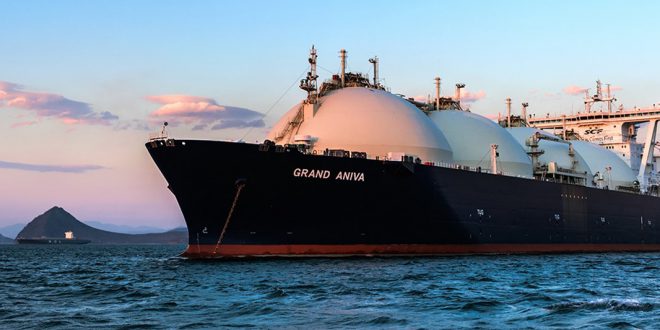Qatar and other major LNG players will continue to operate on long-term contracts to ensure steady flows and to utilise oil price indexation. according to QNB.
Oil price indexation remains. for the time being. as the most practical and reliable basis for long-term pricing in LNG. QNB has said in an economic commentary.
Analysing emerging trends in the Asian LNG market. QNB said Asian liquefied natural gas prices have sharply increased in recent months due to higher-than-expected Chinese demand.
Despite the market being oversupplied. Chinese buyers have had a difficult time finding LNG because most supplies are locked up in long-term contracts. leaving less than a third of the total LNG supply available on the global spot market.
However. the changes in LNG supply and demand as well the approaching expiry of long-term contracts could push more LNG sales onto spot markets and result in shorter contract lengths. QNB said.
“We expect this gradual shift to continue in the coming years but most of the market. particularly major producers like Qatar. will still operate on long-term contracts providing buyers with long-term energy security.“ QNB noted. “The global LNG market operates very differently from its fossil fuel cousin. crude oil.“ it said. There is no singular LNG benchmark price and the market is heavily segmented by region.
In North America and Europe today. LNG trade is conducted on shorter contract lengths and pricing generally reflects market fundamentals of supply and demand. However. the volume of LNG traded is relatively low because Europe and North America have more mature pipeline infrastructure through which higher volumes of gas are supplied. Meanwhile in Asia. where 70% of global LNG supply is destined. buyers have historically sought to secure the commodity on contracts of 20 years or more to ensure a stable and reliable supply. As a result. QNB said. there is no liquid spot market for LNG in Asia that can be used for reference pricing. Buyers and sellers have therefore linked LNG pricing to oil prices. a process called oil price indexation. There has been a long standing debate about whether Asia should move to a more flexible model similar to North America and Europe. Long-term contracts and oil price indexation have historically benefited both producers and consumers.
The steady cash flow to producers has shored up investment in the sector. which in turn has prevented shortages and price spikes for consumers. But now there are two emerging factors. which are challenging the current operating environment. First. the shale gas boom in the US has offered a new source of supply to the global LNG market and lowered prices. incentivising buyers to move to shorter contracts. The rapid development of US shale gas in the mid-2000s caused excess supply in the US domestic gas market and resulted in a sharp decline in natural gas prices. The drop pushed US gas prices well below Asian crude-linked prices from 2009 to 2015 and the two have remained close even after the decline in crude oil prices. As a result. buyers are looking at US gas prices as a floor for the market which will persist as US LNG exports continue to grow. The US completed its first export terminal in 2016 and began shipping LNG cargoes this year. Export capacity is set to rise over five times and bring US LNG supplies from essentially zero to potentially over 10% of the global market by 2020.
Second. the long-term outlook for LNG demand is increasingly looking more bullish than that of oil. This could be a benefit to some LNG producers who would gain by selling more on spot markets at higher prices. Projections of LNG demand reveal growth of over 3%-5% per year until 2030. while base case oil demand growth is expected to be around 0.5%-1% per year over the same period. Environmental concerns. particularly in Europe and China. are behind this global push for higher natural gas consumption due to its lower carbon footprints compared to other fossil fuels such as crude oil and coal. These factors will increasingly play an important role in the coming years because a number of large Asian long-term contracts are approaching expiry in the early 2020s. creating an opportunity for both buyers and sellers to renegotiate the terms of the LNG trade. The International Group of LNG Importers (GIIGNL) projects that long-term contracts accounting for over 6% of global LNG will expire in 2020 and this will increase to over 20% by 2025. Recent trends have shown both new long-term contracts coming online as well as an increase in more short-term spot deals. Qatar. for instance. has signed long-term contracts with Pakistan. Bangladesh and Thailand. while countries such as China. Singapore. Angola and Kuwait have made short-term agreements with different sellers.
On the bottom line QNB said low US LNG prices and bullish future demand prospects are likely to result in shorter contracts and new pricing mechanisms that better reflect LNG’s own fundamentals. But that being said. this shift will be gradual as the current operating environment has served both buyers and sellers well. QNB said.

 Iran Energy News Oil, Gas, Petrochemical and Energy Field Specialized Channel
Iran Energy News Oil, Gas, Petrochemical and Energy Field Specialized Channel



